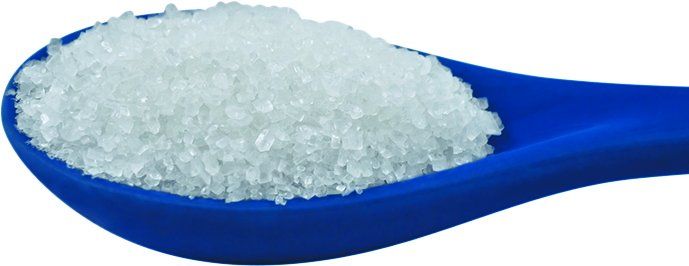Dreamstime.com

Last May, the FDA unveiled an updated Nutrition Facts label, which is required on packaged foods by July 2018 (small companies get an extra year). A big change to the label is listing the amount of “Added Sugars.” Those are sugars added by manufacturers. Although you should consider several aspects of a food’s nutritional value, checking added sugars can inform choices when comparing products within categories.
The average American consumes about 13.5% of a day’s calories from added sugars. For someone eating 2,000 calories a day, that equals 17 teaspoons of sugar. The majority of these added sugars come from soda/sugary drinks, sweets and snacks.
“Higher intake of added sugars has been associated with increased rates of heart disease, metabolic syndrome (a cluster of risk factors for heart disease, diabetes and stroke) and other chronic conditions,” says Alice H. Lichtenstein, DSc, Gershoff Professor of Nutrition Science and Policy at Tufts’ Friedman School. “The goal recommended by the 2015-2020 Dietary Guidelines for Americans and American Heart Association is to consume less than 10% of calories as added sugars. It can be very difficult for a consumer to calculate this number. A reasonable individual goal could be to reduce the grams or teaspoons of added sugars you typically consume. Using the new information on the Nutrition Facts label will make that easier.”
Beyond Calories:
Sugars have 4 calories per gram whether they’re added or naturally occurring. It’s what comes with the sugars – or what doesn’t – that makes a difference. “The FDA recognizes that added sugars can be a part of a healthy dietary pattern,” says Susan Mayne, PhD, director of the Center for Food Safety and Applied Nutrition at the FDA. “If [added sugars are] consumed in excess, it becomes more difficult to eat foods with enough dietary fiber and essential vitamins and minerals to meet nutrient requirements and still stay within calorie limits.”
For example, you get about 38 grams of sugars in either 12 ounces of lemon-lime soda or 12 ounces 100% pineapple juice. But, you get very little vitamins or minerals in the soda. The pineapple juice, however, is a good source of vitamin C, thiamin, folate and vitamin B6.
Screening Added Sugars:
“With the old Nutrition Facts label, consumers couldn’t tell how much added sugars were in a product,” Mayne says. Amounts of added and naturally-occurring sugars were combined in a single listing as “Sugars.”
Products like soda contain only added sugars, but other products, such as pasta sauces and many dairy foods, often contain both sources. For example, flavored yogurt contains lactose (milk sugar) and sometimes fructose (fruit sugar) from added fruit. But it also contains added sugars for sweetening (unless a sugar substitute is used). So, without the new labeling, you wouldn’t know how much of the total sugars were added versus naturally occurring.
Evaluating Added Sugars:
Besides comparing added sugars in similar products, you can use the new information to decide if a food is high or low in added sugars. In general, if the % Daily Value for added sugars is 5% or less, it’s low. If it is 20% or more, it’s high. You may decide to indulge in a small portion of a high-sugar food as a treat or eat it less often, but you should try to choose foods with low amounts of added sugars most of the time.
The Daily Value for added sugars is based on advice to limit added sugars to less than 10% of daily calories. If you need 2,000 calories a day, which is the average calorie requirement used for the Nutrition Facts label, that’s a daily limit of 50 grams (about 12 teaspoons) of added sugars. If you need fewer calories, your daily limit for added sugars would be less.
“As the new labels start appearing on food packages, take advantage of the added information,” Tufts’ Lichtenstein says. “For example, each week replace a commonly-eaten food that’s high in added sugars with a lower-sugar option until you get your total intake down to the limit.”
To learn more: FDA, March 2017
To learn more: International Food Information Council, December 2016
























